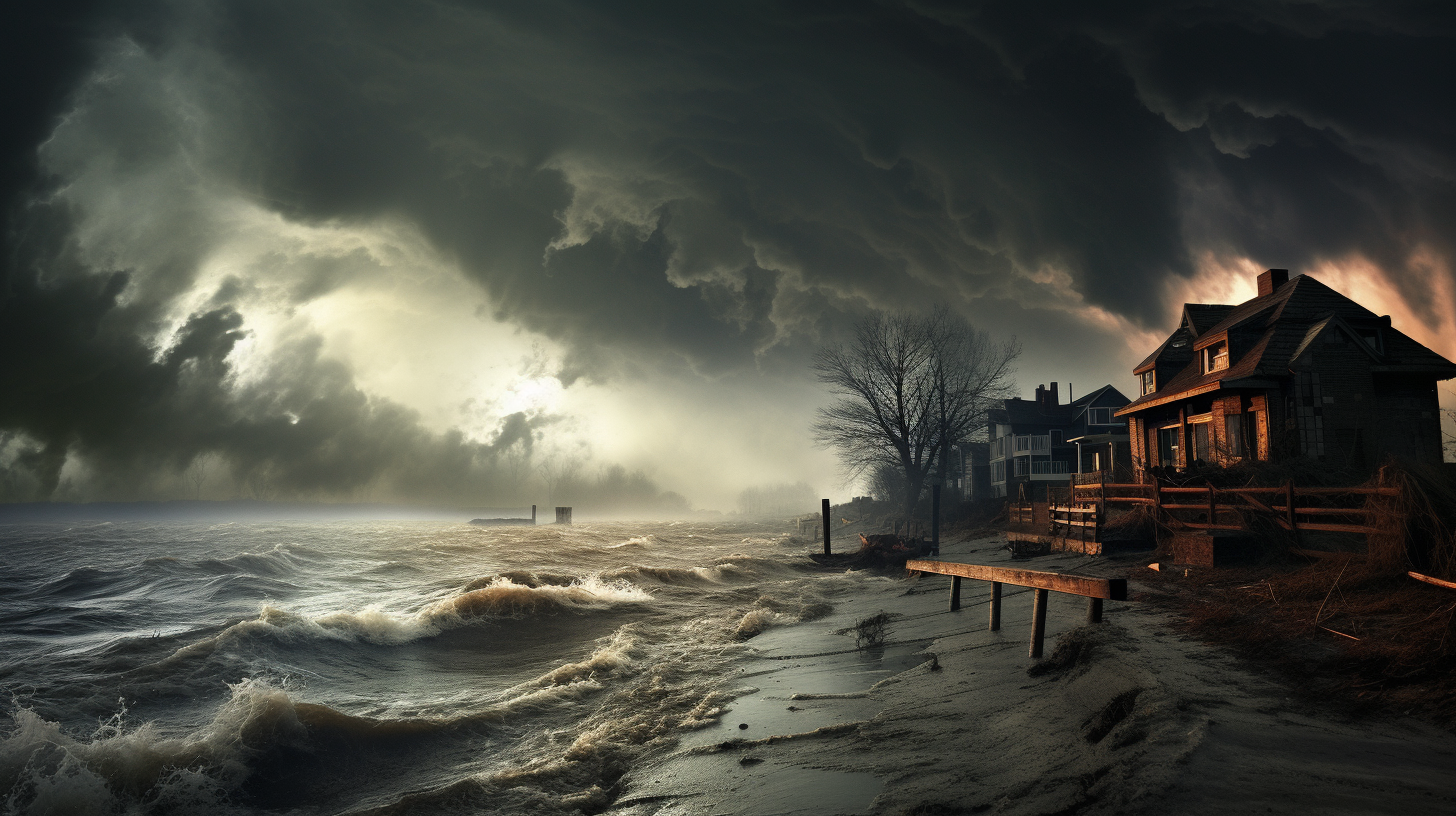As if awakened from a slumber by the drumbeats of civilization’s industrial heart, the planet lashes back with what can only be described as nature’s furious encore: perpetual storms. After an unsettling period of thunderous silence, the gales have returned not with a warning but with a declaration of a new tumultuous era.
Gone are the days when fields lay parched under the still air; today, they are perpetually drenched. Massive storm systems, once considered anomalies are now etching their permanent scars across our landscapes. With a frequency and ferocity that defy historical charts, these tempests are the Earth’s resounding response to years of environmental neglect. They are here to stay, and they are anything but forgiving.
Amidst the backdrop of this endless meteorological siege, resilience appears as a bitterly ironic term. Communities adapt not by thriving but by merely surviving. Coastal towns, once poised to weather seasonal events, now contend with the incessant barrage of winds and waves – a relentless reminder that the rhythm of nature has been disturbed, perhaps irreparably.
Consider the relentless storm cycle over the Atlantic basin, an aquatic avenue for tempests that have besieged cities, crippled infrastructures, and upended lives. The waters – warmed by the kiss of unchecked emissions – birth cyclones at a pace that mocks our sense of normality. The new equilibrium is instability, the forecast, forever menacing. The irony is brutal. While we sought to harness the wind, we are now at the mercy of its whims.
Let us delve into the eye – not of a storm – but of a reality. The myths that once lined the pages of seafarer’s lore are no longer tales; they are testimonials. ‘The great gale of the twenty-first century’, a story for future generations, except the narrative is no longer its only witness. The protagonists – all of us – live within this dystopia, face battered by the rain, hope washed away in the flood.
Scientists offer a blend of empathy and data, a cocktail as bitter as the rain itself. Their studies not only confirm the trends but sound the alarm for what is yet to come. ‘The shifting climate paradigm,’ they call it – an artist euphemism for the end of weather predictability. Their models, intricate tapestries of probabilities and outcomes, speak of human-induced chaos theory in action. Nature, it seems, is indifferent to our pleas for clemency.
Among this maelstrom of destruction, where entire regions have become synonymous with disaster, there lies an uncanny beauty. The raw, unbridled power of our planet is both a spectacle and a reminder. ‘We are not its masters,’ whispers the wind, ‘but mere inhabitants’. The gale-force winds carry this message, ensuring it is heard above the roar of the crashing waves.
In this era of perpetual storms, the fulfilment of our most foreboding fables, it seems poetic that the answer to whether we can adapt is not whispered by the zephyrs but screamed by the hurricanes. As architects of our own plight, we are collectively tied to the mast, facing the abyss with eyes wide open, wondering, ‘What have we done?’.
Yet, paradoxically, it is in the depths of despair where true human spirit often shines. Stories emerge from the tempest, tales of solidarity, of ingenuity, and of sheer will to persevere. But make no mistake; these are not happy endings written in the sky. They are momentary reprieves in an ongoing saga with chapters yet to unfold.
As this article stands, an elegy to the world we once knew and the tempestuous one we inhabit, the haunting question remains; will future prophecies be of calmer seas, or are we penning an eternal storm? Our legacy lies not within the words but within the actions that follow. The story of Perpetual Storms is far from over, and the quill, trembling in humanity’s hand, awaits the next line to be written.
